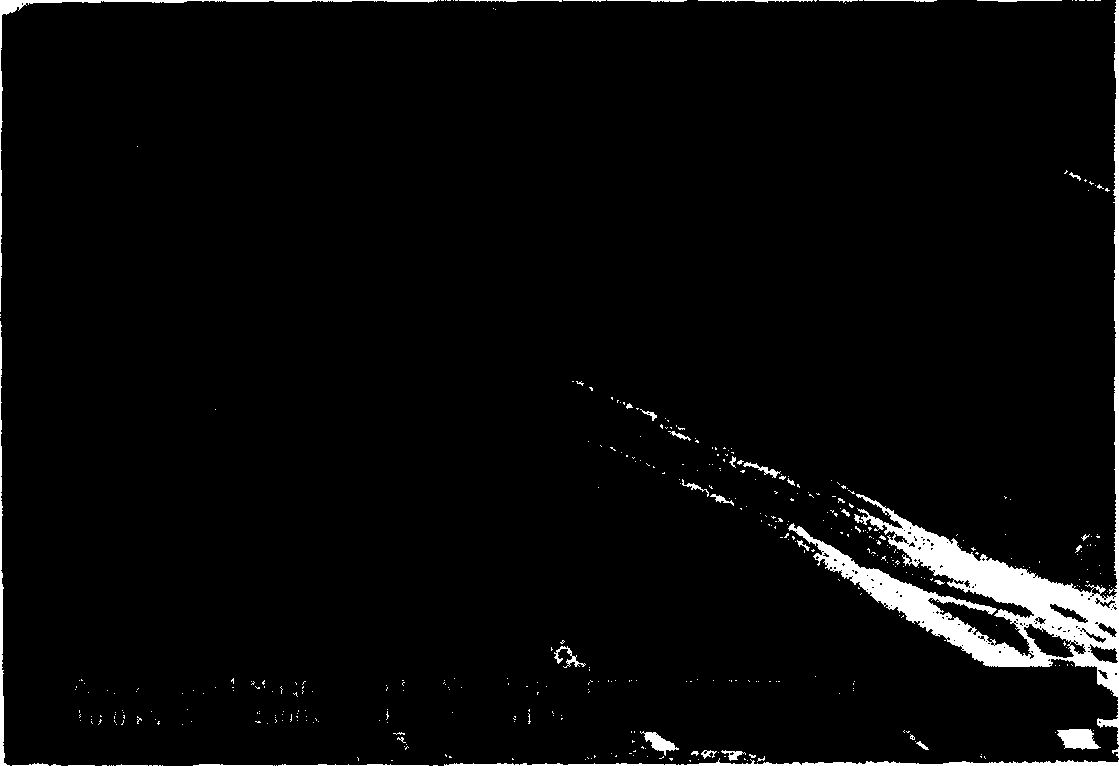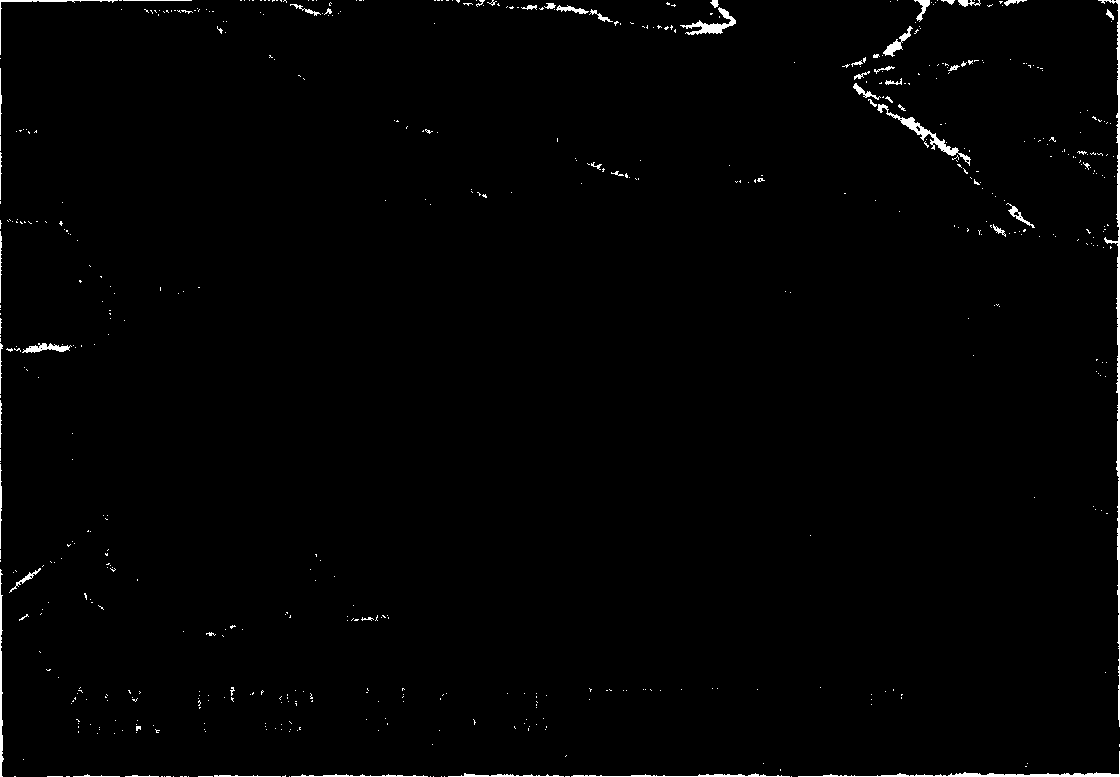Method for preparing heparin collagen/chitosan porous rack of composite angiogenin
An angiogenin and porous scaffold technology is applied in the field of preparation of heparinized collagen/chitosan porous scaffolds, which can solve the problems of loss of biological activity and short half-life, and achieve the advantages of promoting vascularization, simple method and improving transplant survival rate. Effect
- Summary
- Abstract
- Description
- Claims
- Application Information
AI Technical Summary
Problems solved by technology
Method used
Image
Examples
Embodiment 1
[0028] Example 1: Effect of heparinization on microstructure of collagen / chitosan porous scaffold
[0029] The collagen of bovine tendon was extracted from bovine tendon by enzymatic hydrolysis and acid extraction. Collagen, chitosan are prepared into 0.5% solution respectively with the acetic acid solution of 0.5mol / l, then bovine tendon collagen solution and chitosan solution are mixed and injected into mould, and chitosan solution content (by weight) is 10% , freeze-dried at -20°C for 2h and then freeze-dried in a freeze dryer to obtain a collagen / chitosan porous scaffold; after the gained collagen / chitosan porous scaffold was treated at 105°C for 24h under vacuum, it was soaked in sodium heparin (purchased from In the 2-N-morpholine ethanesulfonic acid (50mmol / l) solution of SIGMA Company of the United States), the mass ratio of bovine tendon collagen to heparin sodium in the solution is 10:1, soak for 1h, and then add 1-ethyl-3 -3-(Dimethylaminopropyl)-carbodiimide solut...
Embodiment 2
[0030] Example 2: Effect of Heparinization on the Binding Rate of Angiogenin
[0031] The collagen of bovine tendon was extracted from bovine tendon by enzymatic hydrolysis and acid extraction. Collagen, chitosan are prepared into 0.5% solution respectively with the acetic acid solution of 0.5mol / l, then bovine tendon collagen solution and chitosan solution are mixed and injected into mould, and chitosan solution content (by weight) is 10% , freeze-dried at -20°C for 2h and then freeze-dried in a freeze dryer to obtain a collagen / chitosan porous scaffold; after the gained collagen / chitosan porous scaffold was treated at 105°C for 24h under vacuum, it was soaked in sodium heparin (purchased from In the 2-N-morpholine ethanesulfonic acid (50mmol / l) solution of SIGMA Company of the United States), the mass ratio of bovine tendon collagen to heparin sodium in the solution is 10:1, soak for 1h, and then add 1-ethyl-3 -3-(Dimethylaminopropyl)-carbodiimide solution (40mmol / l) and N-...
Embodiment 3
[0032] Example 3: Effects of Different Contents of Chitosan Solutions on the Binding Rate of Angiogenin in Heparinized Collagen / Chitosan Porous Scaffolds
[0033] The collagen of bovine tendon was extracted from bovine tendon by enzymatic hydrolysis and acid extraction. With the acetic acid solution of 0.5mol / l, collagen, chitosan are formulated into 0.5% solution respectively, then bovine tendon collagen solution and chitosan solution are mixed to obtain chitosan swelling liquid content (by weight) is respectively 5% , 10%, 20%, and 30% mixed solutions, freeze at -20°C for 2h and freeze-dry in a lyophilizer to obtain a collagen / chitosan porous scaffold; the obtained collagen / chitosan porous scaffold is treated at 105°C under vacuum for 24h Afterwards, it is immersed in the 2-N-morpholine ethanesulfonic acid (50mmol / l) solution that contains heparin sodium (purchased from U.S. SIGMA company), and the mass ratio of bovine tendon collagen and heparin sodium in the solution is 10...
PUM
 Login to View More
Login to View More Abstract
Description
Claims
Application Information
 Login to View More
Login to View More - R&D
- Intellectual Property
- Life Sciences
- Materials
- Tech Scout
- Unparalleled Data Quality
- Higher Quality Content
- 60% Fewer Hallucinations
Browse by: Latest US Patents, China's latest patents, Technical Efficacy Thesaurus, Application Domain, Technology Topic, Popular Technical Reports.
© 2025 PatSnap. All rights reserved.Legal|Privacy policy|Modern Slavery Act Transparency Statement|Sitemap|About US| Contact US: help@patsnap.com



